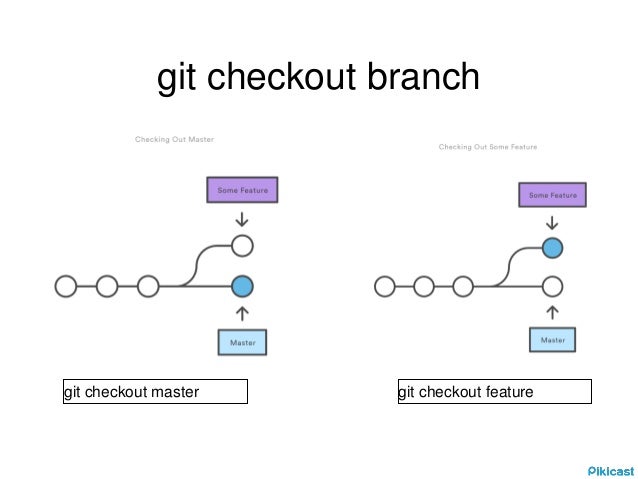

$ git branch įor example, as we did earlier, we can create a branch for “pagination” by replacing “ ” with “pagination”. This is the standard method for creating a branch using the git branch command and specifying the name of the Git branch you want to create.
Git checkout local branch how to#
How to Create a Git Branch Without Switching to the New Branch Let's now look at how to create a Git branch without switching to it.

To accomplish this, we will use the "git checkout" command with the "-b" option and the branch name "pagination".Īs you can see, we created a new branch, and the checkout command caused our branch to automatically switch from "main” to “pagination”. It looks like this: $ git checkout -b Īssume we want to create a new Git branch named "pagination" from the main branch. We can create a new branch and switch to it using the git checkout command with the -b option and. How to Create a Git Branch and Switch to a New Branch Here's the TL DR quick version of the code: // create a branch and switch to the branch Or you can create the branch first using one command and then switch to it later using another command when you wish to work with it. You can use a single command to create the branch and switch to it. In essence, there are two methods in Git for creating branches. Now let's quickly go over how to create branches in Git. Your repository's main branch, which is regarded as the authoritative branch, is the only branch present by default. This is especially crucial when working with other developers. This lets you compare changes before submitting a pull request and finally merging it. If you specify "HEAD" as the revision, you will restore the last committed version of the file, effectively undoing any local changes that you current have in that file: $ git checkout HEAD index.When you're making changes to a Git repository, it's a best practice to push to a different branch first. If, in one go, you also want to create a new local branch, you can use the "-b" parameter: $ git checkout -b new-branchīy using the "-track" parameter, you can use a remote branch as the basis for a new local branch this will also set up a "tracking relationship" between the two: $ git checkout -b new-branch -track origin/developĪnother use case for "checkout" is when you want to restore an old revision of a file: $ git checkout 8a7b201 index.html This will make the given branch the new HEAD branch. In its simplest (and most common) form, only the name of an existing local branch is specified: $ git checkout other-branch If you want to restore a specific earlier revision you can provide that revision's SHA-1 hash. By providing HEAD as the revision, you can restore the last committed version of a file - effectively undoing any local changes that happened since then. Restores a historic revision of a given file. when unpushed commits in the local branch or unpulled commits in the remote exist). This allows you to more easily see when the two aren't in sync (i.e.

This way, the new local branch has a tracking relationship with its remote counterpart. This can be used as a shortcut instead of the following two commands:Ĭreates a new local branch - and sets up an "upstream" configuration. b Ĭreates a new local branch and directly switches to it. By specifying the name of a local branch, you will switch to this branch and make it the current "HEAD" branch. The name of a local branch that you want to switch to. Thereby, you can reset single files to earlier revisions - while keeping the rest of the project untouched. The most common use case for "checkout" is when you want to switch to a different branch, making it the new HEAD branch.Īnother use case for "checkout" is when you want to restore a historic version of a specific file. The "checkout" command can switch the currently active branch - but it can also be used to restore files.


 0 kommentar(er)
0 kommentar(er)
